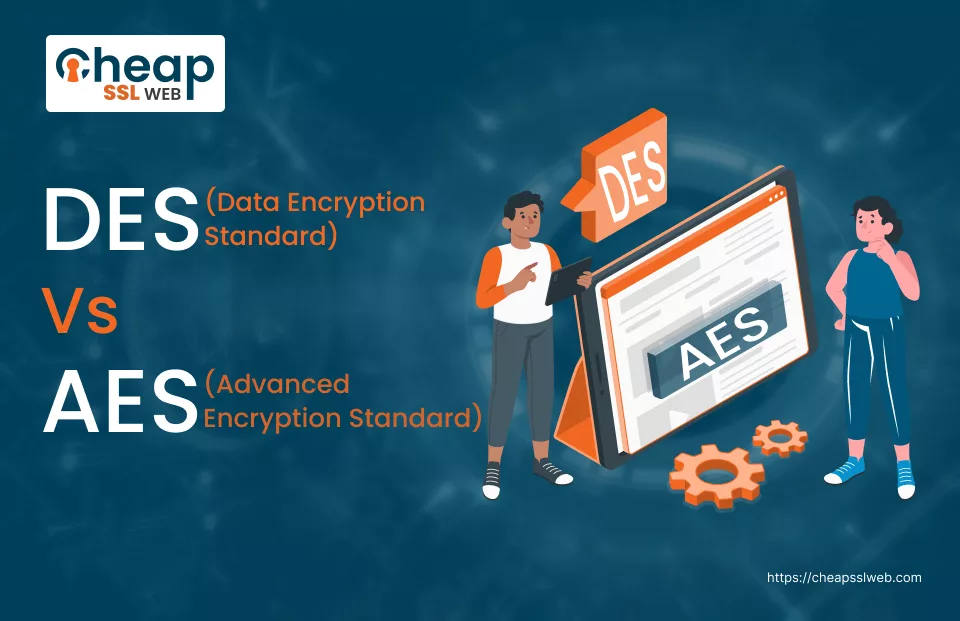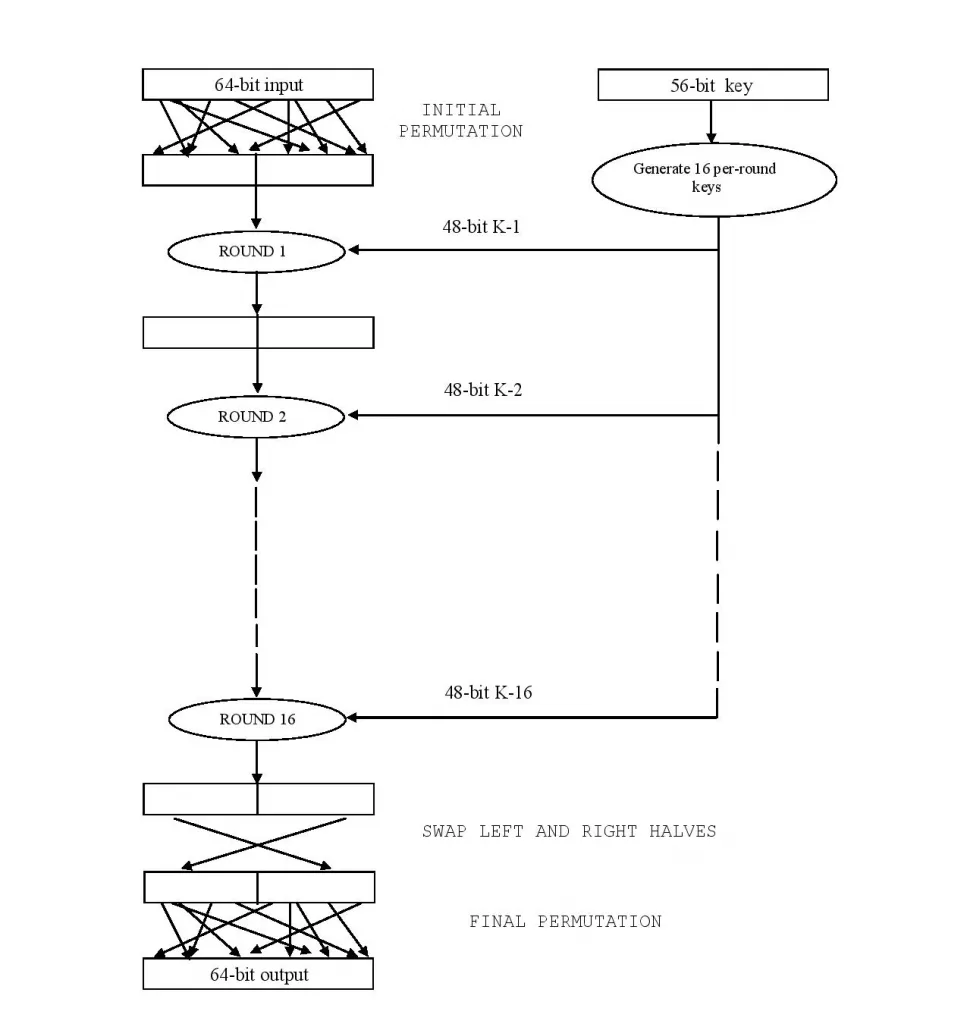DES(Data Encryption Standard) vs AES (Advanced Encryption Standard): Difference

What is DES?
DES (Data Encryption Standard), which is a symmetric-key block cipher, was adopted as a standard in the United States for the federal government in 1977.
Some Key Points about DES:
The DES (Data Encryption Standard) was developed by IBM researchers at the beginning of the 1970s and was the first encryption algorithm that was publicly disclosed after the U.S. government’s approval.
Recommended: What is DES Encryption: How It Works?
DES has 64-bit block and 56-bit key length (8 parity bits make the final key 64-bits).It applies a series of 16 rounds, each of them containing several levels of permutation and substitution, to the plaintext block.

DES algorithm is built upon Feistel cipher structure and involves initial and final permutation, a key schedule, and a round function that contains expansion, key mixing, substitution and permutation.
Even though DES was extensively used for many decades, it is thought to be no longer secure because of its shorter key length of 56 bits which can be cracked by modern computers in a shorter time.
It has been replaced by a stronger cipher, the Advanced Encryption Standard (AES). DES despite the flaws remains helpful backing up the data in some apps and encrypting the data that has a low failure chance of being targeted for decryption.
What is AES?
AES (Advanced Encryption Standard) has become the most common nation-wide implementation of encryptions globally. Here are the key points about AES:
AES replaced Implemented in 2001 AES has the very old Data Encryption Standard (DES) developed by the United States National Institute of Standards and Technology (NIST).

AES is a symmetric key algorithm, the same is used for encryption and for decryption. It helps by various key lengths of 128, 192, and 256 digits.
AES is working on ‘128-bit’ blocks of data and performing a sequence of substitutions and rearrangements, on 10, 12, or 14 rounds of keys, depending on the key size.
Also Read: What is AES 128 Bit Encryption and How Secure AES 128 Bit is?
The AES algorithm uses an “S” box, row shifting, addition of columns along with mix columns and add round keys.
AES is referred by its designers as a symmetric encryption algorithm that is resistant to all currently known cryptographic attacks and much faster than any other cryptographic predecessor:
DES It is applied in various different areas of application such as wireless communication security, secure databases, safe messages, and file and diskette encryption.
Also Read: What is AES-256 Encryption? Everything To Know
While no real clockwork against AES was discovered, the security of AES depends on questions like key management, secure implementation, and the general security of the system in which it is used.
Why AES Replaced DES Encryption?
There are several key reasons why AES (Advanced Encryption Standard) has replaced DES (Data Encryption Standard) encryption:
Increased Key Length:
AES has longer key sizes (128, 192, and 256 bits) than the 56 bit DES key. Greater key length leads to the crypto being secure against brute-force attacks.
Improved Algorithm Design:
AES uses a much more mathematically compact and elegant permutation-substitution structure in comparison with DES that uses Feistel network. It is sharper and is therefore, more secure and quicker to use as well.
Cryptographic Strength:
AES was spotted by cryptographers lots of times across the world and had survived countless attacks to be violated into. It claimed to be perfect against any known attacks, as opposed to DES which was recovered as not being good enough over time.
Standardization and Adoption:
AES won this open competition by NIST after sufficient research, specifications, and resources were dedicated to its development. Later, it was recognized and today AES is the encryption standard of choice that replaced DES which is old.
Performance:
AES is, in general, faster and more suitable for the software implementation than DES, which is almost the rule. This makes it in line with the current equipment and application requirements.
Also Read: RSA vs. AES Encryption: Key Differences Explained
Detailed Difference Between DES and AES
| Aspect | AES | DES |
| Key Size | AES supports much larger key sizes of 128, 192, and 256 bits. | DES support small 56-bit key size, making it less secure against brute-force attacks. |
| Algorithm Structure | AES uses a substitution-permutation network. | DES is based on a Feistel network structure. |
| Number of Rounds | AES has 10, 12, or 14 rounds depending on key size. | DES has a fixed 16 rounds. |
| Block Size | AES operates on 128-bit blocks. | DES uses 64-bit blocks. |
| Security | AES is considered highly secure and resistant to known cryptanalytic attacks. | DES has been deprecated due to its vulnerability to attacks like differential and linear cryptanalysis. |
| Performance | AES is faster & more efficient | DES is slower & less efficient especially in software implementation. |
| Basic | Entire data block is processed in a single matrix. | Data block is divided into two halves. |
Conclusion
Enhance the security of your site and generate a trusting feeling among your users with CheapSSLWEB Secure Socket Layers/Transport Layer Certificate.
We provide you with SSL certificates that are affordable and robust providing complete protection against cyber threats thus, maintaining data integrity and confidentiality between your website and its users.
By moving to HTTPS, you not only strengthen the security of your website but also increase the ranking in the search engines and improve the user experience.
